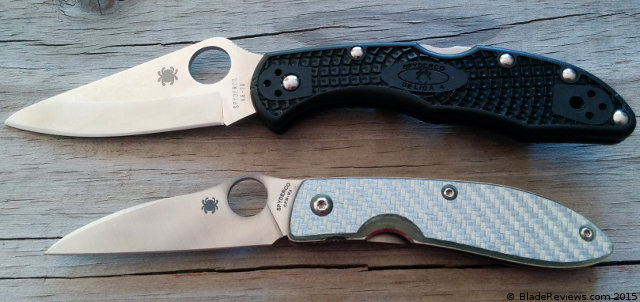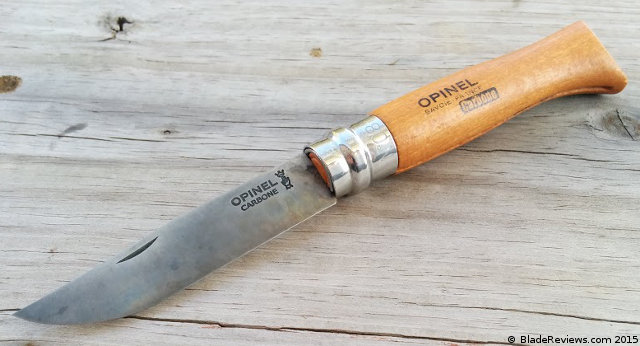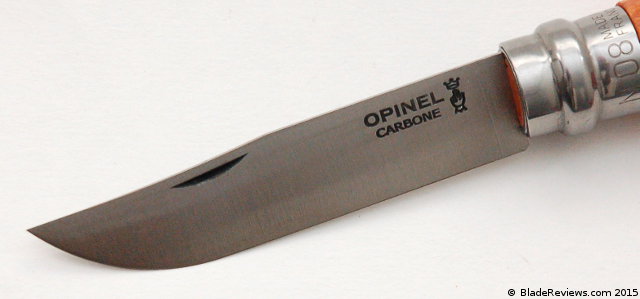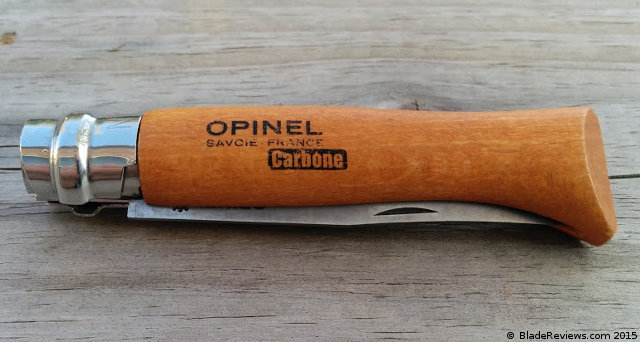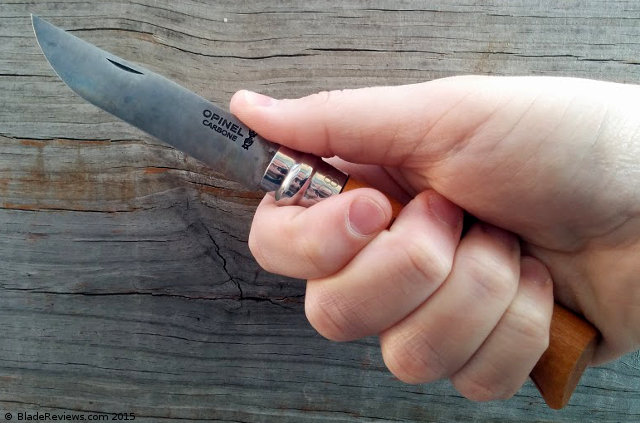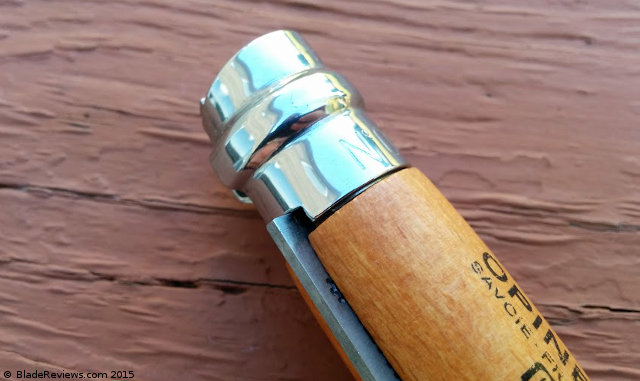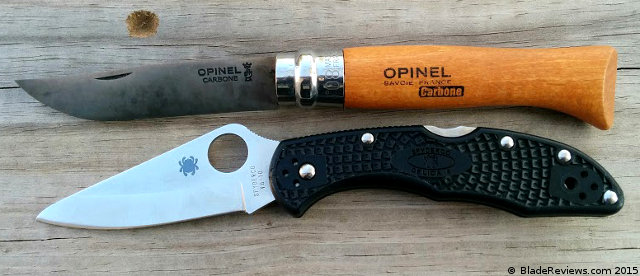Last Updated: August 11, 2019
Although working with custom makers has become common practice for knife companies, many of these collaborations end up feeling like compromises. Whether it’s because of restrictive budgets, or sub-par execution, or whatever else, rare is the collaboration knife that feels like an unhindered expression of a maker’s vision and style.
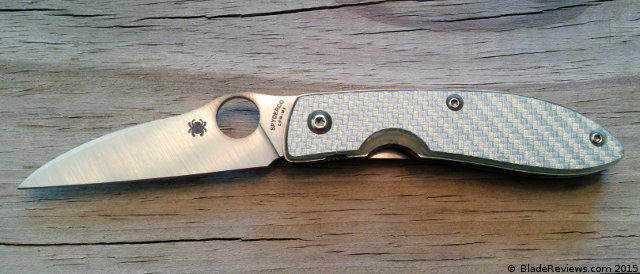
Buy the Spyderco Air at BladeHQ
The Spyderco Air, a knife made in collaboration with Gayle Bradley, quite conspicuously unsettles that trend; it is a considered collaboration, and the result is a knife that is fully a Gayle Bradley even as it is clearly a Spyderco. It feels thoroughly thought-out in a way most knives do not. It isn’t the perfect knife for every task, but for the tasks it is designed for, I can’t think of a knife that performs any better.
General Dimensions and Blade Details
The Air has a blade length of 2 5/8”, a 3 ½” handle, and an overall length of almost exactly 6”; thanks to a combination of milled out titanium liners and thin silver twill scales, it weighs just 1.3 oz. Its lightness is one of the reasons why the Air is billed as a gentleman’s folder, but it is surprisingly robust (more on that later). The Air is made in Taichung, Taiwan.
Although the whole knife benefits from Bradley and Spyderco’s attention to detail, the blade is the heart and soul of the Air – as it should be with any knife. It begins with the shape, a Wharncliffe with a few small, but very important, tweaks: first, a subdued swedge that not only reduces material and weight but gives the Air genuine piercing capability for biting into packaging or cardboard or the like. Second, either a slight cant to the blade or an actual curvature that gives it a little belly, making the traditionally neutral -feeling Wharncliffe shape a little more aggressive with material.
The Air’s blade is made from CPM-M4 steel, a tool steel with a reputation for extreme edge retention. Looking at the composition chart for M4, the standout element is the amount of Molybdenum; at 5.25%, that’s significantly more than any steel I know of or was able to find. Molybdenum makes a steel tougher and keeps the grain size small, allowing for finer edges – and indeed the edge on my Air came clean and has remained so despite a fairly rigorous couple years of use. It doesn’t get toothy or cut rougher as it dulls – and it hasn’t dulled much in two years of fairly rigorous use.
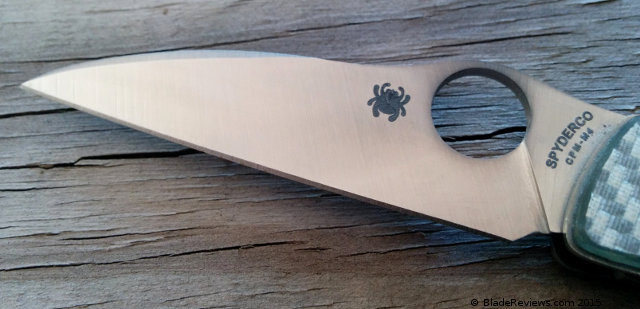
I think the grind is responsible for the edge’s longevity; although the Air is ground thin, the stock isn’t as thin as you’d maybe expect, and there’s still a fair bit of material right behind the edge, which keeps the edge stable. I would take issue with this grind if it affected cutting performance at all, as I’d gladly trade toughness for slicing ability with a knife of this size, but it doesn’t; Bradley and Spyderco seem to have really understood what makes M4 appealing, and ground the Air to best take advantage of that appeal. The end result, as Gayle Bradley discusses in this video interview, is that you have a small, discreet knife that can actually be used pretty hard.
That’s not to say that M4 is perfect. It is a tool steel, which, at least when we’re talking about knives, tends to mean something non-stainless. In my experience M4 tends to tarnish where it is handled a lot, such as around the Spyder Hole. I don’t cut a lot of food with my knives, so my Air wasn’t exposed to the acidity of an apple or a tomato very often; if you use your knife for food prep you may see more discoloration than I did. Even if that were the case, such discoloration is an aesthetic issue, and doesn’t affect performance.
During the testing period for this review I forgot to take the Air out of my pocket and sent it through the wash. When I found it, it was spotted with surface rust over one side, but thankfully a few minutes with a polishing cloth and the rust was gone. This isn’t an indictment of M4, because most steels would rust in that situation; just a public service announcement to check your pockets before doing laundry.
Handle, Ergonomics, and Pocket Clip
The handle of the Air is interesting: like the full-size Spyderco Bradley folder, it consists of scales laid over slightly larger liners. This allows the Air to fill the hand while still looking sleek; I think if the twill scales were extended to covert the liners entirely that it, along with the then-necessary chamfering, would make the Air look chunky. All that aside, the arrangement is visually interesting, and I can’t complain about the functionality either: the Air fills the hand better than something like the Al Mar Hawk Ultralight. You can fit all four fingers on the Air, and there’s even a divot in the spine of the knife to rest your thumb during harder cuts – another sign that it was meant to do some heavy-duty cutting.
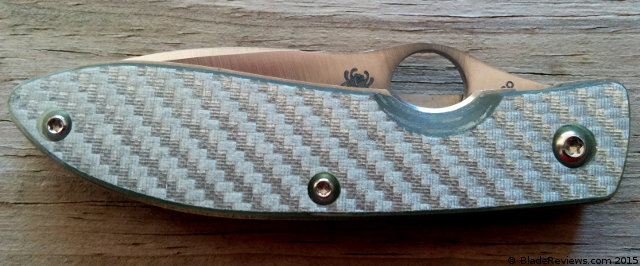
The Air doesn’t have a pocket clip. Apparently Spyderco conducted a survey, and half of the people asked wanted a clip, and the other half didn’t. Ultimately, I think going clipless with the Air was the right decision. The Air is so sleek and lightweight that you truly don’t notice it in your pocket. I always notice a knife that I have clipped to my pocket, no matter small and unobtrusive. Also, I feel that Spyderco would have opted for the wire clip like on the Dragonfly II and, as nice as that clip looks and performs, I find it too easy to break. Finally, the materials the Air is made of are conducive to in-pocket carry; whereas I worry about my Hawk or my Indian River Jack if I carry it without a slip, the Air looks as good today as when I got it, and seems impervious to wear and tear.
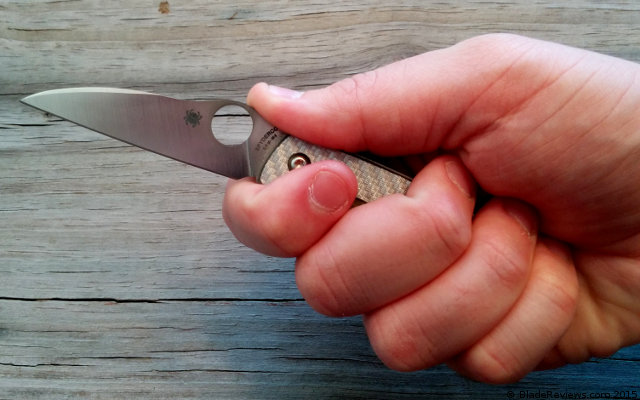
Deployment and Lockup
We all know that the Spyder Hole is an excellent deployment method. Mr. Bradley buried the hole pretty deep into the handle, and although it is slightly occluded, there is more than enough exposed to get purchase with your thumb, and the super smooth deployment takes care of the rest.
For lockup there is a titanium liner lock. Although I don’t remember quite how far the liner travelled when my Air was brand new, after two years it is quite close to the opposite side:
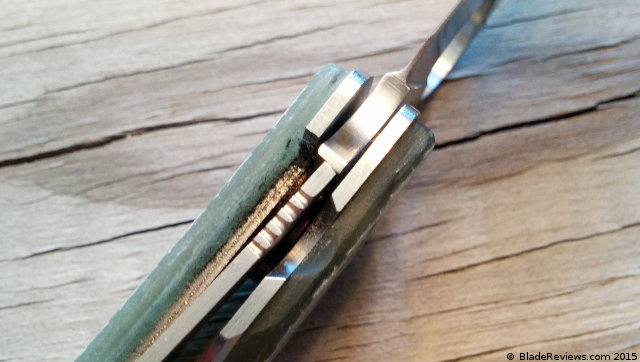
Whether this is how it was when I got it, or if it’s a result of the titanium deforming over time, I’ve never had the least amount of bladeplay, and there are very few knives in my collection about which I can say that. And, one of those “The More I Use Knives” things I’ve learned is that the amount of travel on a liner lock isn’t a clear indicator of how well it will work.
One interesting note about the Air: it has an internalized stop pin that’s set into the back of the tang and rides in channels around the pivot. Mr. Bradley talks about the aesthetic merits of this design in the previously-cited interview, and I can’t say that there’s any other concrete benefit to it, but it’s certainly very cool.
Spyderco Air Review – Final Thoughts
In its product class – an EDC blade, or perhaps the increasingly nebulous ‘gent’s folder’ designation- the Air is about as good as it gets. There are knives that I like as much, like the Indian River Jack or the Hawk Ultralight, but I can’t say that either of those knives are objectively better- and in fact there are definite advantages the Air has over either: one-handed opening over the IRJ, and better steel than the Hawk.
Ultimately, when we’re looking at a collaboration knife like the Air, the faithfulness of the collaboration isn’t the point: what matters is what the faithfulness resulted in, and in this case the result is a knife of unmistakable quality.
- Made using the highest quality materials
- Tested for quality and durability
- The most trusted name in you cutlery needs
- Clip less folding knife
- Walker Liner Lock
I recommend purchasing the Air at Amazon or BladeHQ. Thanks for reading!
